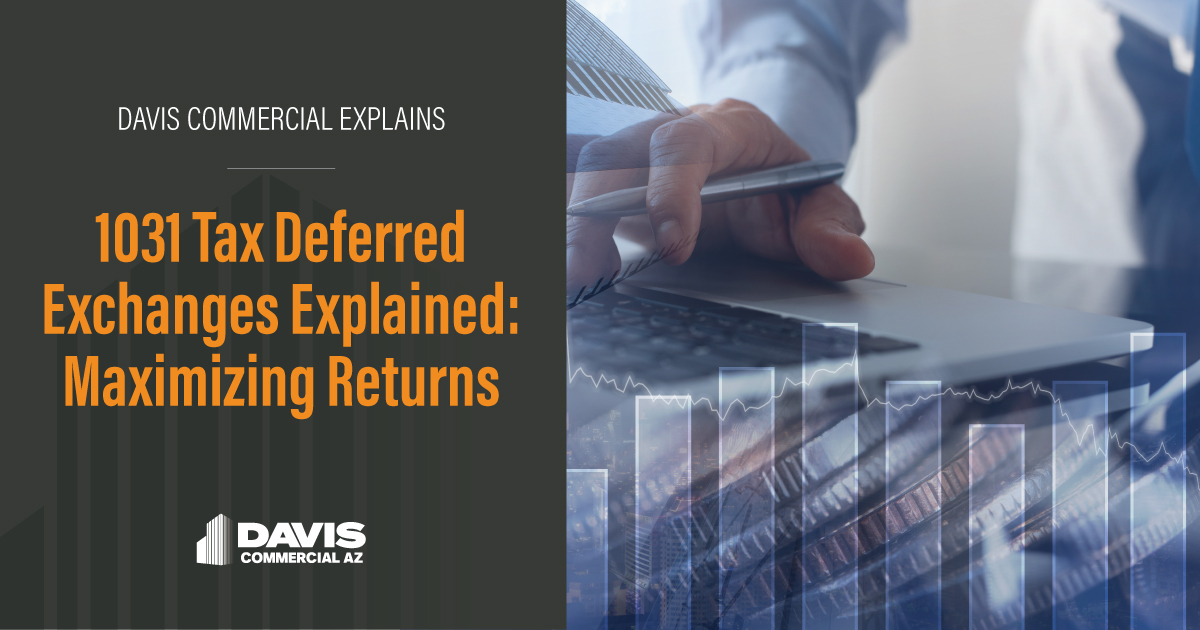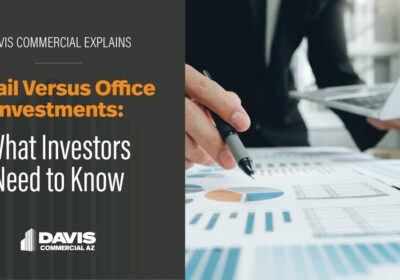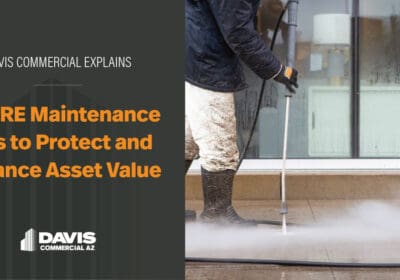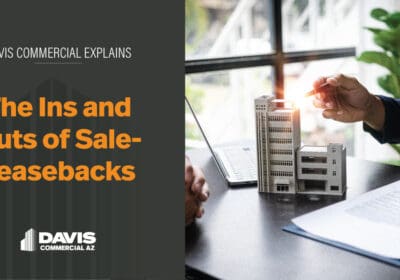1031 Tax Deferred Exchanges Explained: Maximizing Returns

As businesses grow and operations evolve, so do their property needs. The need for new commercial space introduces new considerations related to taxes, depreciation and profitability. A common strategy for managing these financial implications is the 1031 Exchange—a tax-deferral strategy for selling and purchasing property. With the right planning and professional guidance, a 1031 exchange can be a powerful tool for expanding a commercial real estate portfolio.
In this blog, we will outline the fundamentals of a 1031 exchange, including how it works, key rules and deadlines and what to consider before beginning the process.
What is a 1031 exchange?
The 1031 exchange gets its name from Section 1031 of the Internal Revenue Code. It is a tax-deferral strategy that allows real estate investors to sell one or more properties and reinvest the proceeds into another property without immediately paying capital gains taxes on the sale. However, there are rules that need to be followed in order to qualify.
In simple terms, it lets property owners “swap” one property for another of equal or greater value while deferring taxes. It is a strategic tool for growing a real estate portfolio, increasing purchasing power and building long-term wealth.
Build a strong team
Experience and foresight are essential when navigating the complexities of commercial real estate transactions. Assembling a team of qualified professionals early in the process helps ensure that at each stage, from listing a currently owned property to identifying and acquiring a replacement, it is managed efficiently and is in compliance with IRS regulations.
Business owners and real estate investors should begin by evaluating the team that handled the previous property purchase:
- Were they prepared and proactive?
- Did they anticipate details and potential challenges?
- Were their recommendations accurate, informed and timely?
Commercial transactions, particularly 1031 exchanges, require specialized market knowledge and attention to detail. Working with an experienced team of commercial real estate professionals can make a significant difference in the success of a 1031 exchange.
The benefits of a 1031 exchange
- Tax deferral
The main advantage of a 1031 exchange is it allows the business or individual to defer capital gains taxes. Instead of paying taxes immediately upon sale, gains are reinvested into a new property. - Portfolio diversification
A 1031 exchange gives the flexibility to adjust or expand real estate holdings without triggering tax consequences. You can exchange one property for multiple others, repositioning your portfolio to match your evolving business or investment goals. - Wealth accumulation
Over time, the compounded benefit of deferring taxes through multiple 1031 exchanges can significantly increase wealth. Deferred taxes can also be eliminated when property is passed to heirs, providing long-term estate planning advantages.
Key rules and requirements
While the benefits are significant, 1031 exchanges come with strict rules and deadlines that must be followed precisely. Missing a step can result in disqualification and immediate tax liability.
-
Like-kind property
Both the property sold and the property acquired must be “like-kind,” meaning they are both used for business or investment purposes. The properties don’t have to be identical — for example, an office building can be exchanged for a warehouse — provided both are commercial or investment properties. -
45-day identification period
After selling, there is a 45-day window to identify potential replacement properties. Up to three properties may be identified, regardless of their value; or more than three properties if their combined fair market value does not exceed 200% of the original property sold. -
180-day exchange period
From the closing date of the original property, there is a 180-day window to close on the new property. This window includes the 45-day identification period. -
Equal or greater value
The replacement property must be of equal or greater value than the one sold. Any profit or equity (“boot”) taken out of the transaction is taxable income. -
Consistent title
The same entity or individual must hold title to both the relinquished and replacement properties. -
Notification
When you sell a property and plan to complete a 1031 tax-deferred exchange, you must inform the title company before closing. If you fail to notify them in advance, you will not be eligible to complete the exchange.
What is a qualified intermediary?
A Qualified Intermediary (QI) — also known as an accommodator or facilitator — is a neutral third party required to execute a 1031 exchange. The QI holds proceeds from the property sale, ensuring the investor never takes possession of the funds, which would disqualify the exchange.
Selecting a QI is an important decision and imperative for the success of a 1031 exchange. Due diligence should include verifying their experience, financial safeguards and how they hold client funds. Investors want to ensure their proceeds are backed by a large, creditworthy entity. A good QI segregates accounts and carries sufficient coverage to ensure a smooth exchange process.
There is not a single federal statute or licensing regime that directly regulates how QIs must hold client funds. Because of this, selecting a reputable and experienced professional is crucial. Your real estate advisor can connect you with trusted intermediaries who specialize in commercial transactions.
1031 exchange checklist
- Hire a qualified commercial real estate professional to list your current property and search for a like-kind replacement of equal or greater value.
- Inform your team, which can include a title company, accountant, financial advisor and attorney, of your intent to conduct a 1031 exchange.
- Select a trustworthy Qualified Intermediary (QI) before closing.
- Identify the new property(s) within 45 days of selling your current one.
- Close on the replacement property within 180 days of the original sale.
With the right team, a clear timeline and careful planning, completing a 1031 exchange can be seamless. Understanding the process up front allows you to focus on each step with confidence, minimizing stress and maximizing opportunity.
At Davis Commercial AZ, we’ve guided hundreds of clients through this very process. If you’re looking for a straightforward overview before taking your next steps, reach out to discuss your property goals and how a 1031 exchange could benefit your business.
Related Posts

Retail Versus Office Investments: What Investors Need to Know
Not all commercial real estate properties are created equal. Whether you’re eyeing a retail center…

What new developments are shaping the CRE landscape of Metro Phoenix, AZ?
Metro Phoenix consists of more than 20 municipalities and continues to rank among the fastest-growing…

10 CRE Maintenance Tips to Protect and Enhance Asset Value
Protecting the value of a property in commercial real estate (CRE) is crucial, especially for…

The Ins and Outs of Sale-Leasebacks
Sale-leasebacks are a common practice in the world of commercial real estate. They are a…
